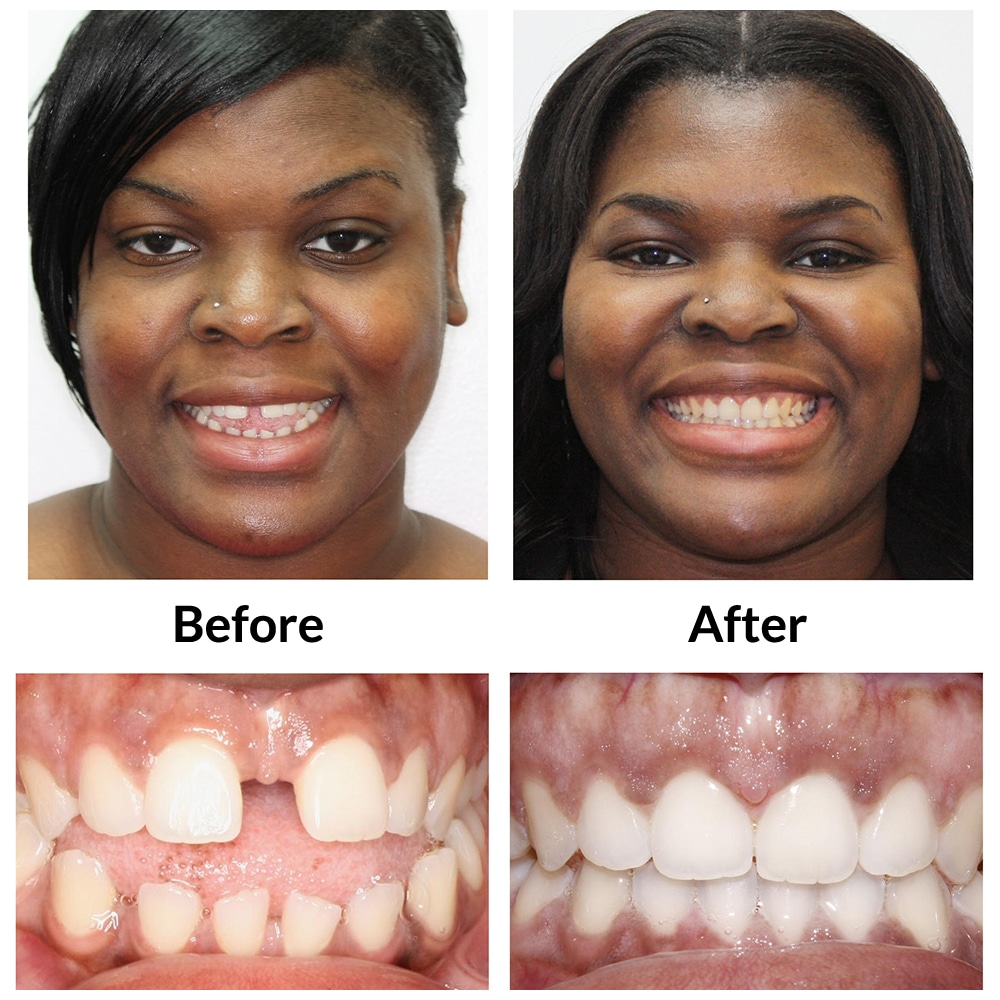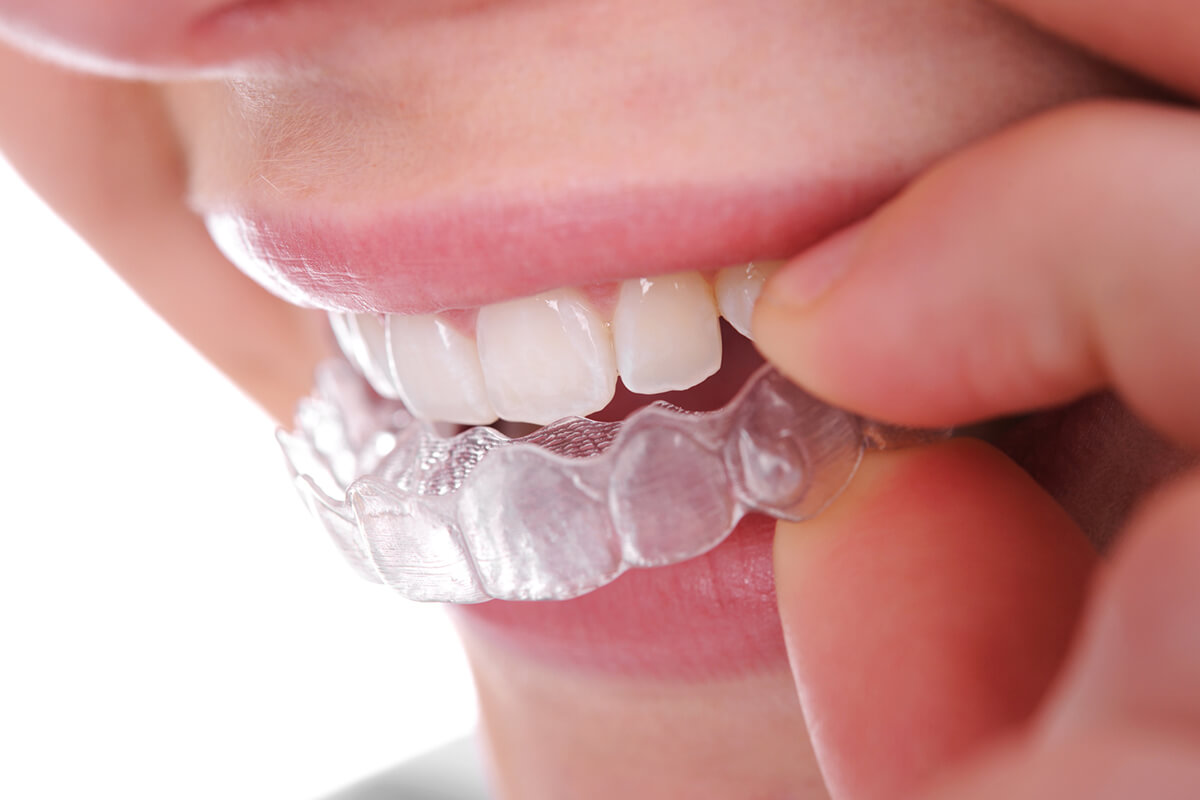Leading Reasons to Select Invisalign Over Other Orthodontic Treatments
Invisalign vs. Typical Braces: Which Option Is Right for You?
When considering orthodontic therapy, the selection in between Invisalign and traditional braces provides several vital aspects that warrant cautious examination. Invisalign uses a discreet alternative with detachable aligners, while standard braces give a much more visible yet reliable service for extreme imbalance. Each option incorporates distinct advantages and downsides associated to looks, convenience, therapy duration, and cost. Recognizing these nuances is vital for making an educated choice that straightens with your individual choices and way of life. The concern remains: which option will finest fulfill your orthodontic requirements and assumptions?
Summary of Treatment Options

On the other hand, typical braces are composed of steel brackets and cables that are adhered to the teeth. This technique uses continual pressure gradually to attain positioning. While reliable for complex orthodontic concerns, traditional dental braces require routine check outs for changes and can present challenges in keeping oral health due to the problem of cleansing around braces and cables.
Both choices have their benefits, and the choice frequently rests on details oral conditions, way of living choices, and patient conformity. Eventually, seeking advice from an orthodontic expert is crucial for figuring out the most appropriate treatment strategy tailored to individual demands. Comprehending the subtleties of each option can significantly influence the overall success of orthodontic therapy.
Aesthetic Factors To Consider
A significant aspect influencing the selection between Invisalign and standard dental braces is the aesthetic appeal each treatment uses. Invisalign aligners are crafted from clear plastic, making them essentially invisible when worn. This very discreet look is particularly attracting teenagers and adults that might really feel self-conscious about their orthodontic treatment. The capability to preserve an all-natural smile throughout the alignment process can substantially improve the individual's confidence in expert and social setups.
In contrast, standard dental braces include metal brackets and cables, which can be much more recognizable. While innovations in orthodontic innovation have actually caused the advancement of smaller braces and colored elastics, standard braces still maintain an even more obvious profile. For some individuals, the exposure of dental braces may discourage them from looking for required therapy.
Ultimately, the option between Invisalign and standard dental braces might rest on personal preferences concerning aesthetics. People who prioritize discretion typically favor Invisalign, while those that are much less worried regarding visibility may opt for traditional dental braces. Comprehending the visual ramifications of each choice is essential for making an informed decision that aligns with one's lifestyle and preferences.
Comfort and Convenience

In regards to benefit, Invisalign aligners are detachable, making it possible for clients to appreciate their favored foods without constraint and preserve optimal dental health. Brushing and flossing are streamlined, as the aligners can be secured during these routines, whereas typical dental braces need mindful steering around brackets and cords.
In contrast, traditional dental braces necessitate regular changes, making them much less practical for those with busy schedules. On the whole, the comfort and convenience of Invisalign make it an enticing option for numerous people seeking orthodontic treatment.
Therapy Period and Performance
While both Invisalign and standard braces are effective in dealing with dental misalignments, the period of therapy can differ dramatically between the 2 alternatives. Normally, Invisalign treatment can take anywhere from 12 to 18 months, relying on the complexity of the case. The clear aligners function by slowly changing teeth into their preferred positions, and routine follow-ups with an orthodontist aid ensure progression remains on the right track.
In comparison, typical braces usually require a longer commitment, normally varying from 18 months to 3 years. This is due to their fixed nature and making use of wires and braces, which can be more effective for complex cases and serious imbalances (Invisalign). The therapy effectiveness of standard dental braces is well-documented, as they permit exact changes and better control over tooth activity
Inevitably, the choice between Invisalign and conventional braces may depend upon both the blog awaited therapy duration and the specific dental issues available. Consulting with an orthodontist is important, as they can give tailored suggestions based upon individual demands, guaranteeing the chosen method aligns with wanted timeframes and end results.
Price Comparison and Insurance Coverage Options
Price plays a substantial function in the decision-making process for people taking into consideration orthodontic therapy, whether selecting Invisalign or traditional dental braces. Usually, the expense of Invisalign ranges from $3,000 to $8,000, while traditional dental braces normally set you back between $2,000 and $6,000. Elements influencing these prices consist of the complexity of the situation, the duration of treatment, and geographical location.
Numerous dental insurance policy strategies offer partial coverage for orthodontic therapies, however the specifics can vary extensively. Typically, traditional dental braces may be a lot more often covered by insurance policy plans compared to Invisalign, which some insurance providers classify as a cosmetic treatment.
Furthermore, several orthodontic practices supply flexible layaway plan, making both treatment choices much more obtainable. Clients need to ask about potential financing alternatives and discounts for in advance settlements. Examining the total expense, consisting of insurance benefits and payment strategies, is important for making an educated decision that lines up with both aesthetic preferences and spending click over here plan considerations.

Verdict
In recap, the option between Invisalign and standard dental braces rests on multiple factors, including aesthetic choices, convenience, therapy duration, and cost. Invisalign offers a discreet, detachable alternative that promotes dental health and dietary versatility, while conventional braces might be preferable for intricate oral problems and usually come with a reduced cost point. Eventually, examination with an orthodontist is important to assess private conditions and establish one of the most ideal therapy choice for accomplishing ideal oral placement.
When considering orthodontic treatment, the option between Invisalign and typical dental braces offers several essential factors that merit cautious assessment.Comparing Invisalign and conventional braces exposes distinct treatment alternatives for orthodontic improvement.While both Invisalign and traditional braces are effective in fixing dental misalignments, the period of therapy can vary substantially in between the two choices.Cost plays a significant function in the decision-making process for people thinking about orthodontic treatment, whether choosing for Invisalign or traditional dental braces.In summary, the choice in between Invisalign and conventional dental braces hinges on several factors, consisting of visual preferences, convenience, treatment duration, and cost.